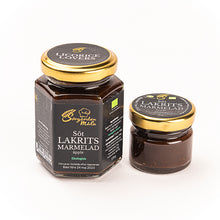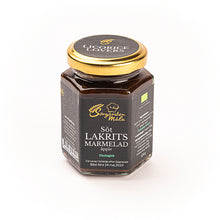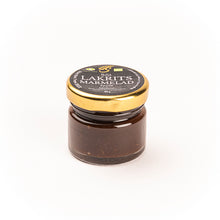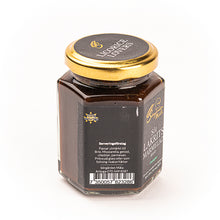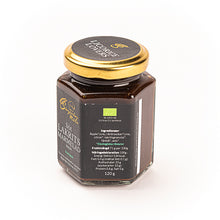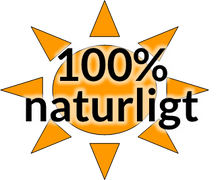
An incomparable flavor symphony that plays on all the taste buds. This pioneer in raven-black attire, refreshing as powder snow, illuminates the dark existence of winter and thaws the most frozen of souls. With inspiration from the works of monks, this is an excellent companion for the upcoming darker season.
Licorice has long been a flavor for the adventurous. I have always been a licorice aficionado. Here I have allowed the ripe and full flavor to marry with fresh, sweet apples. The result is a sweet, delicious taste sensation, quite simply!
A unique and delicious jam made from completely natural licorice from Calabria in southern Italy and Swedish apples. It's the perfect way to add some excitement to your breakfast routine! Spread a layer of Sweet Licorice Jam on your toast and enjoy its perfectly balanced taste. You can also use it as an accessory for cheese plates, gourmet crackers or for the tea party. The perfect way to add some excitement to any meal.
Love the taste of licorice but looking for something a little different? Then you have to try our sweet licorice jam! This delicious jam is made with all-natural licorice from Calabria in southern Italy and Swedish apples. The perfect way to add some excitement to your breakfast routine!
Goes well with Brie, Mozzarella, goat cheese, cheddar, parmesan. Try it on ice cream or as a filling in cakes/cakes
Marmalade is a nice addition to both food and dessert, but where does marmalade come from? And what is its history?
The linguist Bo Bergman claims that the word marmalade has its origins in the Portuguese, namely their name for the quince fruit Marmelo, from which "marmelada" is made. A rumor that also abounds about the origin of the word is that it is a distortion of the French "Marie est malade" (Marie is sick), which would refer to Mary Stuart, the then Queen of Scotland. According to that rumor, her chef would have uttered that phrase while preparing a sweet she particularly liked.
Another theory is that the French "mer malade" could refer to seasickness, which was usually treated with a mixture of citrus fruits. And finally a mix: that Maria Stuart would have been given marmalade to cure her seasickness and then said "Marmalade pour Marie malade" or "Marmalade pour ma maladie"
But, the first indications of marmalade being eaten in England are around 1480, in France in 1573 and all marmalade was then probably imported from Portugal. The marmalade often had a medicinal use and was believed to strengthen the stomach and aid digestion. Even then, marmalade was a popular gift to give and tasted good!
Ingredients: Apple*(65%), raw cane sugar*(25%), lemon*, licorice granules*, fennel seed*, anise seed* *Organic ingredients
Fruit amount 71 g per 100g
Nutrition declaration 100g: Energy 564 kJ/134 kcal; Fat 0.4 g (saturated fat 0.1 g); Carbohydrates 33 g (sugars 33 g); Protein 0.6 g; Salt 0 g









